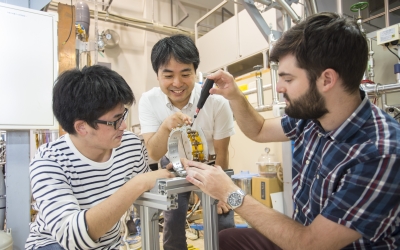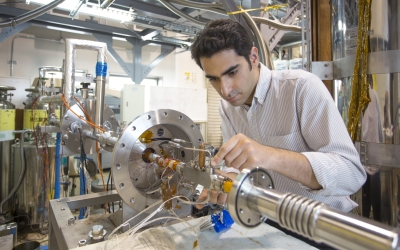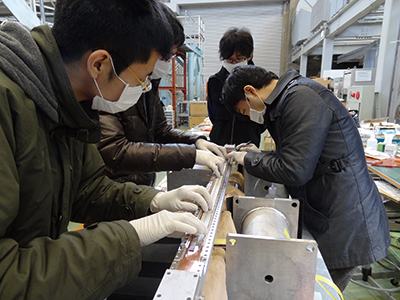Front Line Research
We propose a remountable (demountable) high-temperature superconducting magnet, and our laboratory is pursuing its design and development.
The innovative idea of splitting up massive superconducting magnet coils elicits new possibilities.
The heart of a nuclear fusion reactor is its core. In the core, deuterium and tritium are formed into plasma, which is then heated to a high-temperature of over 100 million degrees to induce a nuclear fusion reaction. However, a container made with a material that can withstand 100 million degrees does not exist with current technology. Therefore, a fusion reactor confining plasma in magnetic field has been proposed, which utilizes property of charged particles spiraling along magnetic field lines. This is called a magnetic confinement fusion reactor.
The superconducting magnet which creates a strong magnetic field inside the nuclear fusion reactor has a massive and complex structure that makes its production cost high. In addition, as it is difficult to gain access to apparatuses inside the reactor, a superconducting magnet is disadvantageous in terms of maintenance. The technology that resolves this issue is the remountable high-temperature superconducting magnet devised by Professor Hashizume. A characteristic of a superconductor is that, as the temperature decreases, its electrical resistance becomes zero, but if the magnet is split up, resistance occurs at the joined area. We conduct research in order to overcome this difficult problem through an engineering approach, considering the structural optimizations of the joined surface and superconducting conductor, and development of advanced cooling technique, among others.

This is the remountable high-temperature superconducting magnet prototype devised by Associate Professor Ito.

Experiment for the advanced cooling technique of cryogenic coolants



